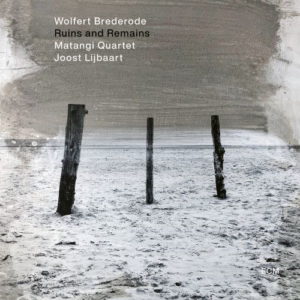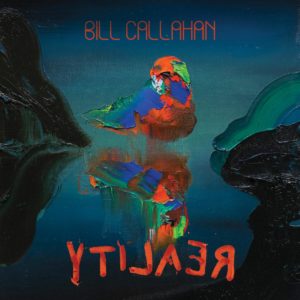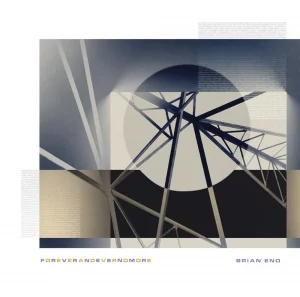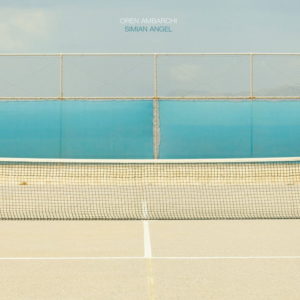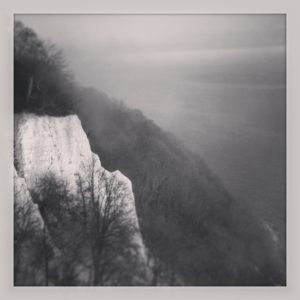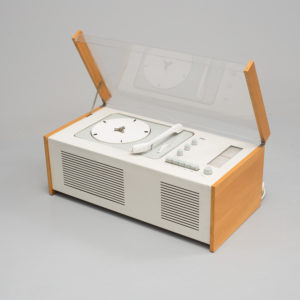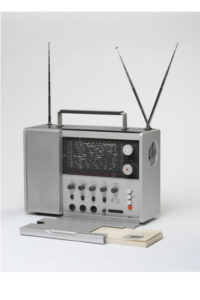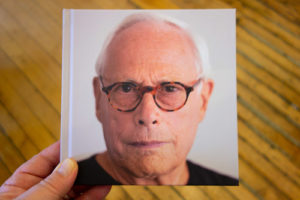Hier, mit diesen beiden Texten über das Teamwork Eno/Holland, endet mein erster Teil der Remixe alter Texte aus dem Jahre 2011. Eine Fortsetzung folgt im Mai. 2012 werden dann, wenn wir mal positiv denken, weitere Manas dazustossen, und den Blog in ein munteres Perpetuum mobile neuer und alter Texte verwandeln. Wir sollten im kommenden Jahr den Textraum 2012 / 2013 öffnen. Damit der Chor vielstimmiger wird. Dieser Text hier ist natürlich remixt, und bietet eine verdichtete Version meiner Besprechung von „Drums Between The Bells“.
1 – PRIMORDIAL SLUDGE
From early on, Brian Eno has been quite sceptical about words, their meanings, their ability to distract our attention from sound. So, although having written outstanding, at times surreal lyrics for his brilliant four song albums in the seventies („Here Come The Warm Jets“, „Taking Tiger Mountain (By Strategy)“, „Another Green World“ (this perfect mélange of songs and purely atmospheric pieces) and „Before and After Science“), he had never added the lyrics.
Now, on this album, the poems are printed. An interesting problem for the master of Ambient Music: poems consist of a highly condensed language, everything within a poem requires careful attention, every syllable, every space between lines, every picture, every breath words take. Eno’s trick: everything becomes sound; the listener decides for himself where to move, foreground, background, wordwise, soundwise. The music offers a broad spectrum: funky passages, trash jazz, exotica a la Eno, post-Kraut-electronics and drifting-spheres, soulful chamber music. Inspired stuff.
2 – INTO THE MURKY WATER
Poems and music – a special affair! „Drums Between The Bells“ will speak, with an open heart, to people who look for vital music they have never heard before, and to those who are curious about a still quite living thing called modern poetry. Remembering the Eno-Byrne masterpiece „My Life In The Bush Of Ghosts“ (1980) with the cut-and-sample approach to speaking and singing voices (mad priests, talking heads, singers from the Lebanon etc), the new record leads from the „bush of ghosts“ to a „theatre of voices“.
Nine voices (most of them women) give life to words, sometimes these voices (including the ones of Brian and Rick) are pure realism, sometimes they are morphed and treated. It’s never a gimmick, it always serves the words, the meanings, the sensual quality! Brian calls these tracks „speech songs“. And, using the language of people who come from other parts of the world, enriches the English words with a surprising, non-professional freshness, a special vibe!
In the brilliant slow motion piece, „the real“, a female voice is speaking about our ability to see or see not „the real in things“, full of repetitions and small changes. A sophisticated way of mixing hypnotic induction with perception theory: solid earth suddenly feels like murky water. The last lines one can (depending on your state of mind) clearly indentify tell us: „while real runs out and seems to see the real as it runs“ – then the voice turns from a soft speaker to a strange species. Seductive.
3 – THE MADNESSES OF MOOD
What do you think, Brian Eno loves about Rick Holland’s poems? I read his little book „Story the Flowers“ and found an interesting mix of careful attention to everyday life, philosophy, humour and science. Small towns, big towns, coastal areas are portrayed in a deeply sensual way (I’m happy to leave out the word „spiritual“ here). There is always an enigma that won’t be solved too soon. Something that hangs in the air. „I thought this was the kind of poetry I wanted to work with. The poems were short and sharp“, Eno writes in the foreword of a special edition, „their images were strong and the language memorable enough to reward repeated listening.“ The music drives, waits, suggests, breathes, swirls, stops, penetrates. And it does a lot more.
Sometimes the words approach the singing area, but it takes a while till we discover an oldfashioned thing called song: near the end, Eno starts singing, and, you know, so many people – nevertheless how much they love his ambient works – have just waited too long for new songs of Mr. Eno („Wrong Way Up“, 1990, „Just Another Day On Earth“, 2005). Now one can take a deep breath, when listening to the brilliance of „cloud 4“ – but, what’s that: a song that could last forever stops after one minute and fourtythree seconds?! We call this English humour. And remember that old saying: brevity is the essence of wit. But, well, I have to confess: the form of the song is perfect, there’s a opening part, a middle section and an uplifting ending:
„the madnesses of mood / weatherfronts we know / hem us in / or free us like children /just one day apart /a lifetime in the sky / sun, scan the sky like flight / search for any sign / (things) will be alright.“
4 – GRAMOPHONE CIRCLES AND BACKGROUND DUST
And then? Then comes nothing (of course a very Cagean and well placed nothing, 56 seconds of silence) – and after that, a quiet revelation, another fantastic song: Eno delivers „Breath of Crows“ with a deepness in his voice you have rarely ever heared. Robert Wyatt will send kisses! Eno sings with a vulnerability, a slowness, an intensity that is not so far away from the last Scott Walker albums.
„my god is in the breath of crows / it grows and shrinks with nature’s wish / a fire with no link to the wish of man / but it must be absolute, this god, /for when the mind is still it moves. / my god is in the breath of crows / may i not delude my i to think / he grows to grant my wish / or wash my sin / but let me watch in wonder / as he makes his work / wonder in this. / the sounds of holy night abound / kestrel calls and bells / drink the air /and the race for meaning quells /(let it in) /or the calls will sound like hollow tin /or gramophone circles / and background dust / i must replaced by must / by scent and sense /wonder this.“
5 – NO FINAL WORDS
I have no doubt that first reviews will be controversial, „thumbs up“ or „thumbs down“. Strange beasts (for sure those that come along with modern poetry) easily produce defense mechanisms a la „highbrow“ or „very intellectual“. There is nothing highbrow in this work. And don’t expect some final words about the album. Many of you will be surprised, I think, in more than one or two ways! Old school? No, this is cuttin‘ edge! And Eno never overeggs the pudding: „Drums Between The Bells“ is a wild thing on ots own peculiar ways.
P.S. The „special edition“ offers a foreword (we get to know somethin about the history of speech-songs), Eno’s imagery inspired by the music, and purely instrumental versions of the tracks – highly recommended, too! By the way, all the music is performed by Brian Eno. On some pieces Leo Abrahams plays guitar, Seb Rochford does some excellent drum work on the opening track, and the wonderful Nell Catchpole (who already added her magic in the days of WRONG WAY UP) plays violin and viola to several pieces.
